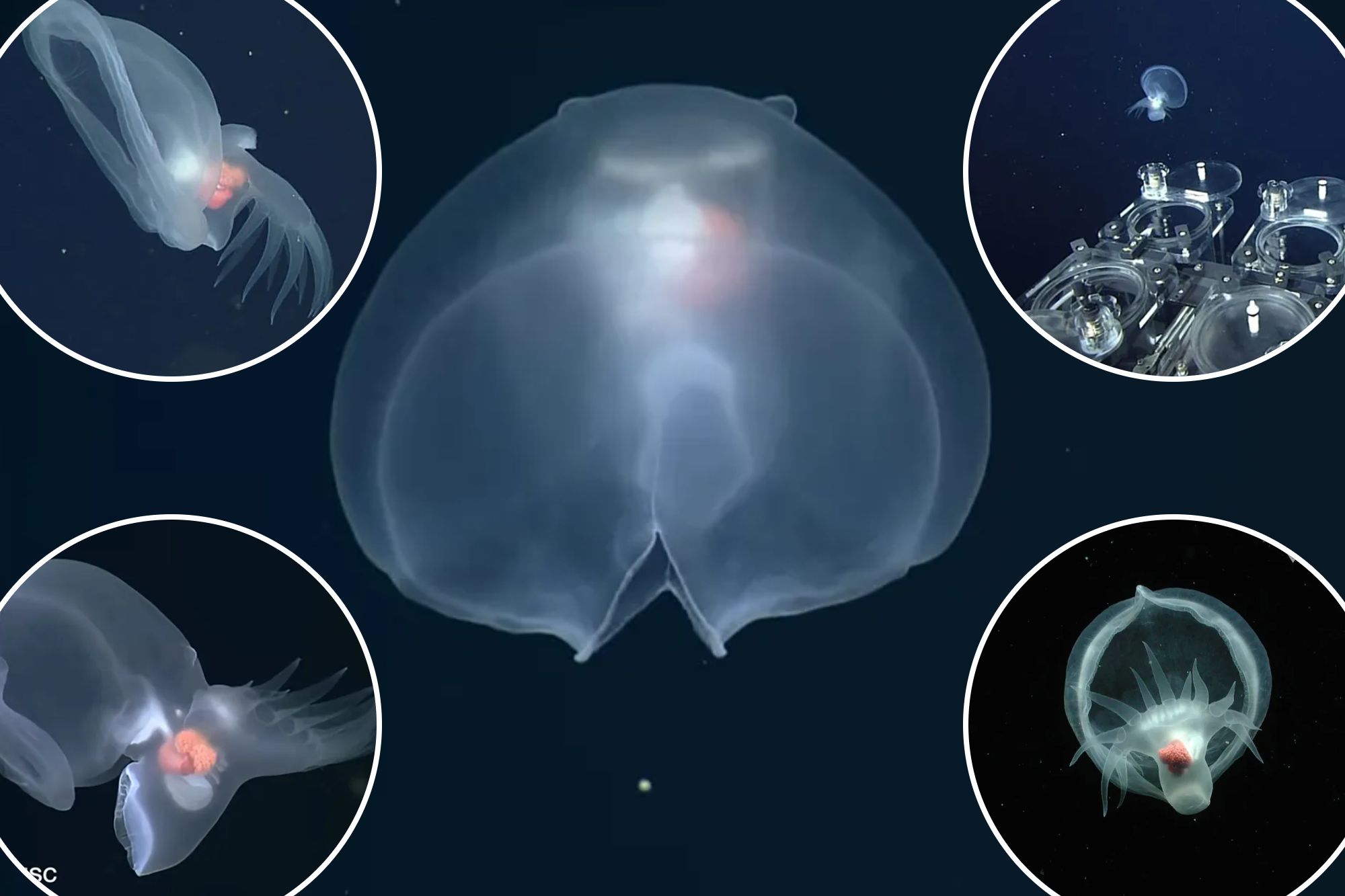
They had to sea it to believe it.
Researchers near California waters found an elusive, deep sea “mystery” mollusk that operates as a Venus fly trap far below depth. The creature is also spectacularly bioluminescent with a vivid neon blue glow, like a cross between a jellyfish and an overgrown houseplant to the untrained eye.
Now, a new paper shines a light on the newly identified 5.6-inch “devious” Bathydevius caudactylus — research that’s a quarter of a century in the making.
“We’ve invested more than 20 years in understanding the natural history of this fascinating species of nudibranch,” said researcher Bruce Robison, whose study is now published in the journal Deep Sea Research Part I.
One side of the nudibranch — known colloquially as a sea slug — is a “voluminous hooded structure at one end” with a “tail fringed with numerous finger-like projections at the other,” according to the Monterey Bay Aquarium Research Institute.
The underwater slug, which propels itself to swim by closing its hood like a jelly, also contains “colorful internal organs in between.”
It lives at depths up to 13,100 feet on the sea floor’s pitch-black “midnight zone.” The recently found species is the first of its kind to live that far down, according to the researchers.
The slug was seen in Oregon to Southern California waters and could have a broader presence in the Pacific Ocean.
This strange catch’s most effective predatory skill is using its “cavernous hood” to trap crustaceans like shrimp like the Venus fly trap, explained experts at the institute.
When threatened, the mollusk harnesses its most dazzling feature, bioluminescence, to distract other sea floor predators. It does so by deploying a “steadily glowing finger-like projection from the tail” as a decoy.
After one was safely captured, researchers were just as distracted as attacking fish would be when the sea slug lit up with a “starry” appearance across its back, too.
“Everyone in the control room let out a loud ‘Oooooh!’ at the same time. We were all enchanted by the sight,” said senior scientist Steven Haddock of the aquarium’s institute.
He added that cameras have only recently reached a level of sophistication to capture bioluminescence in water adequately.
The team is eager to use the glowing sea slug to enlighten further deep-sea research.
“Our discovery is a new piece of the puzzle that can help better understand the largest habitat on Earth,” said Robison.














